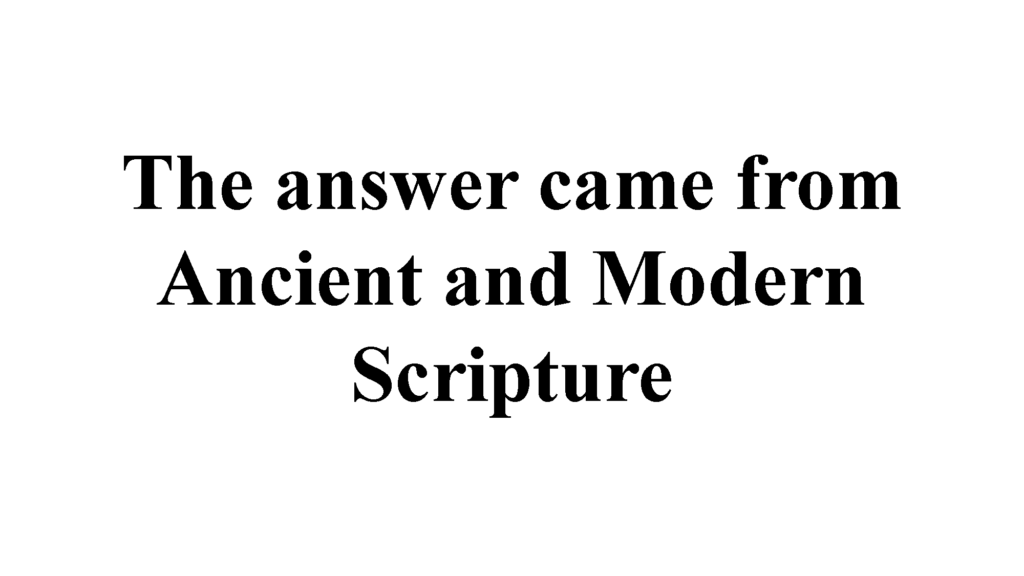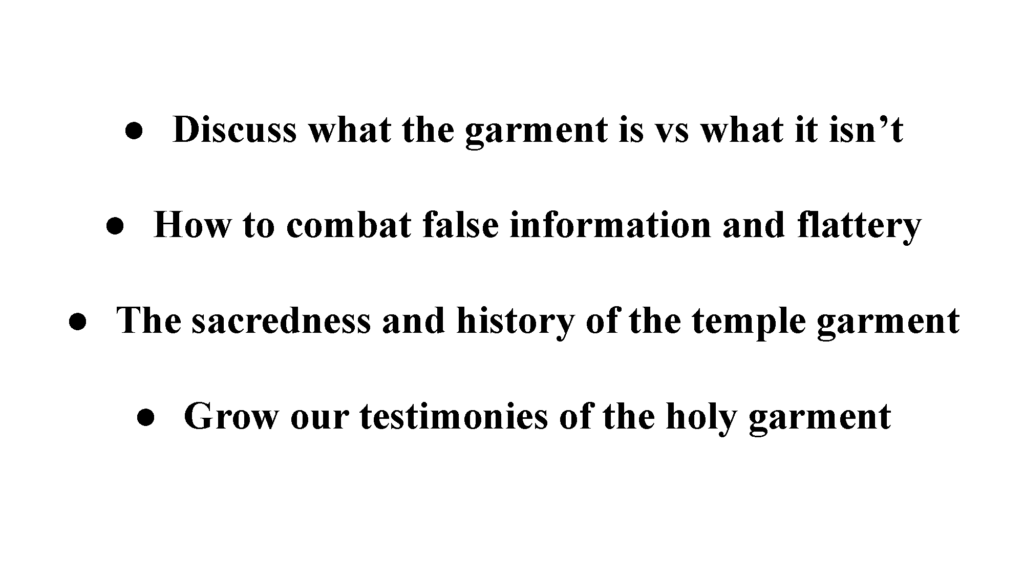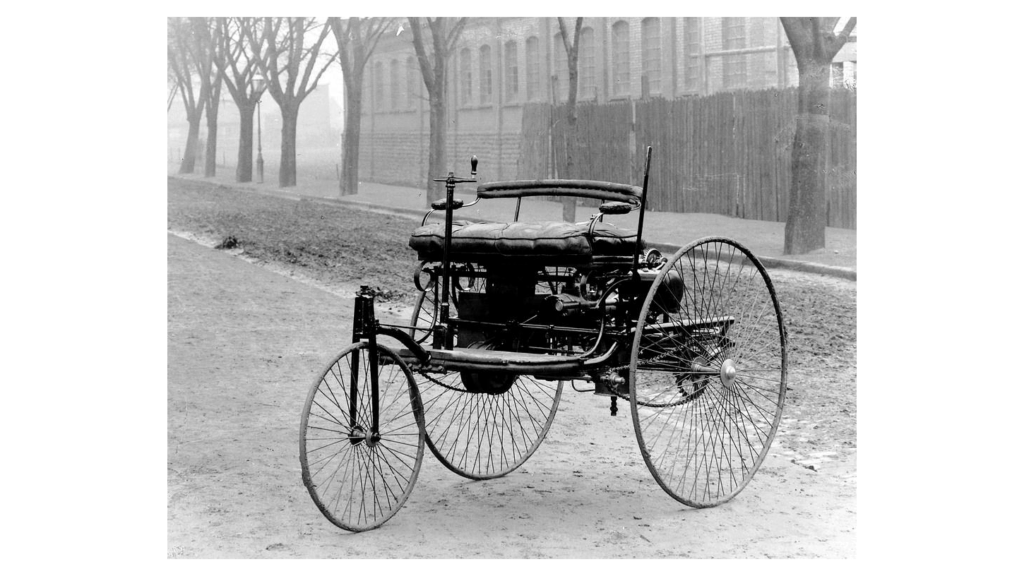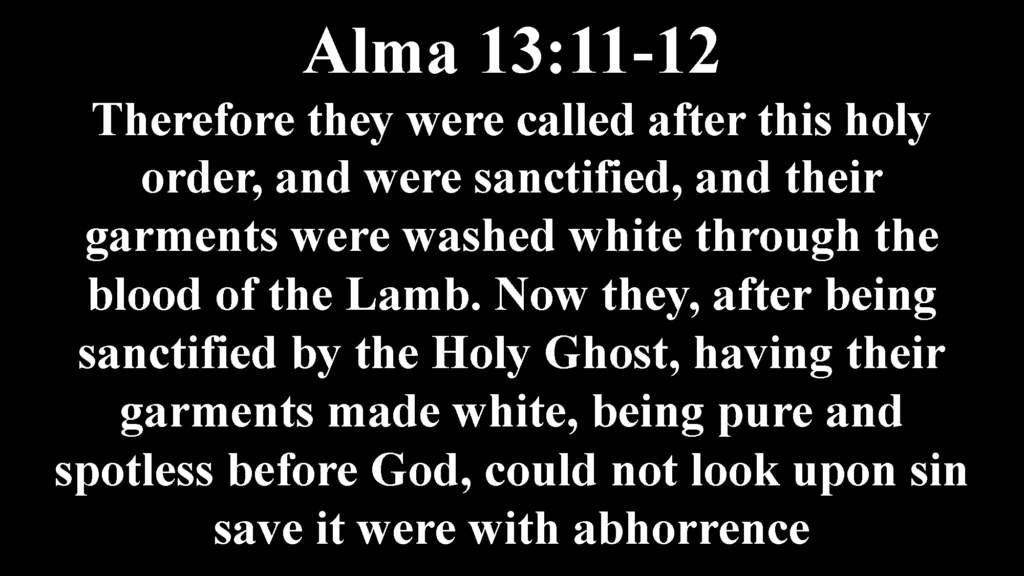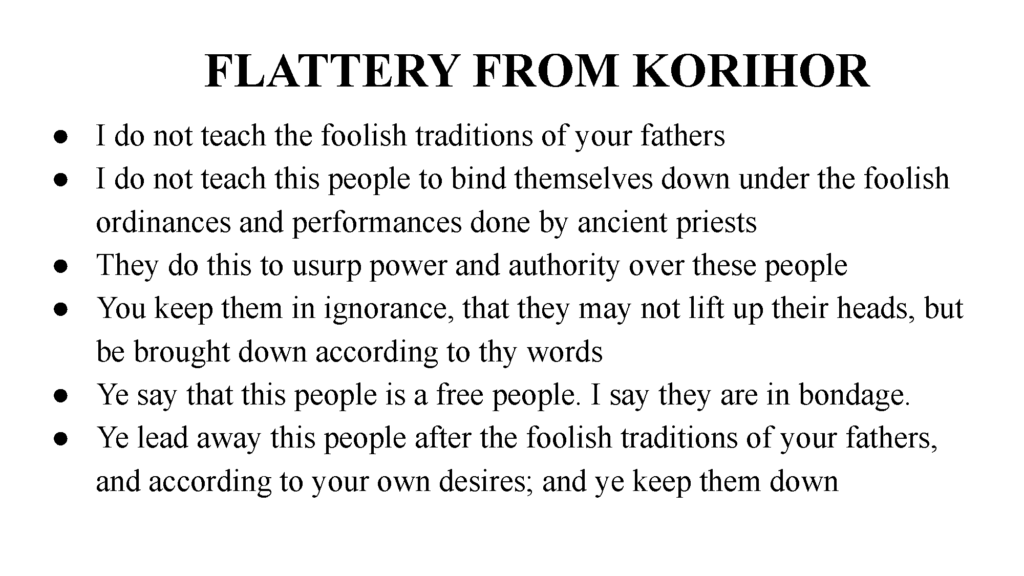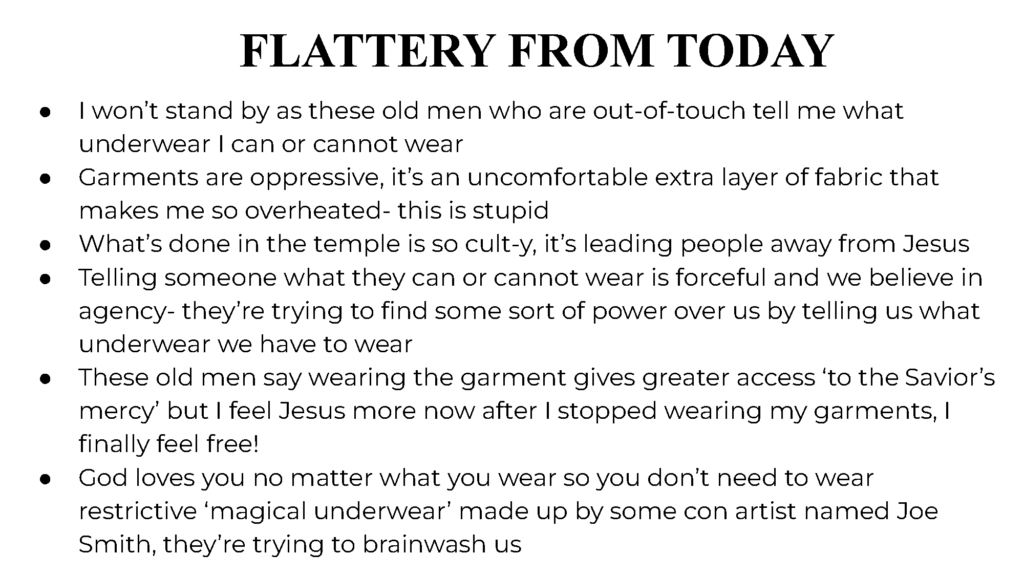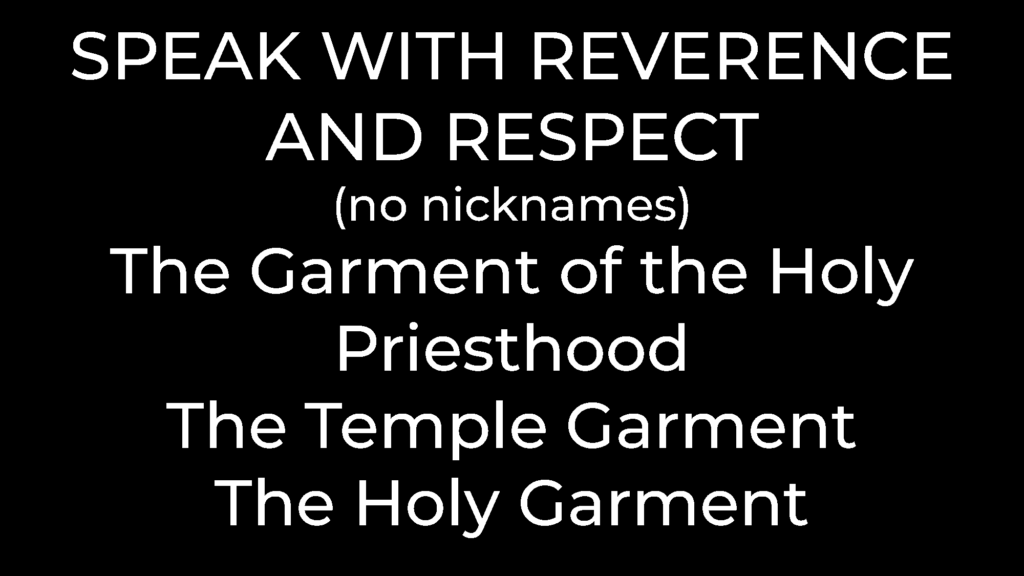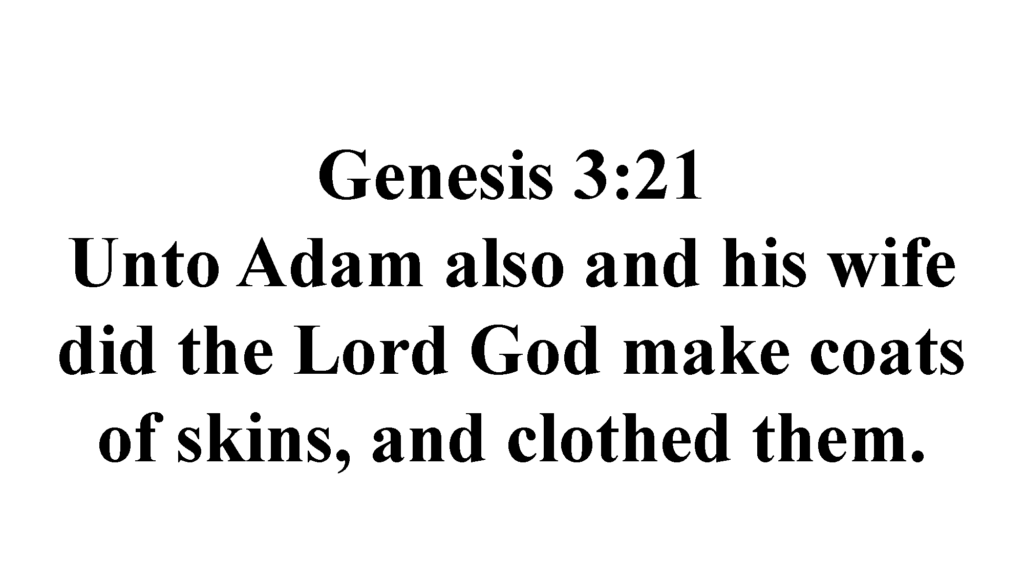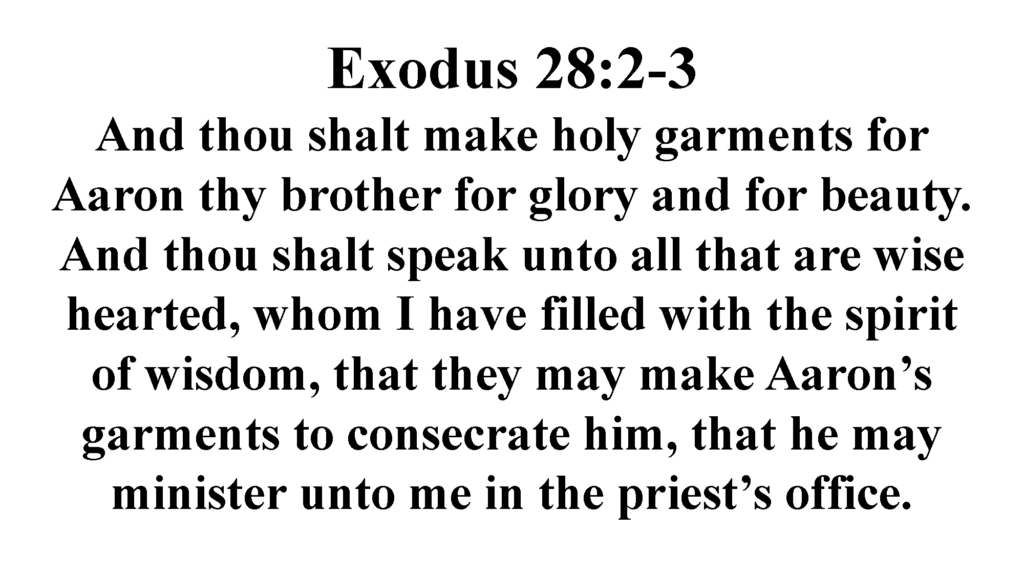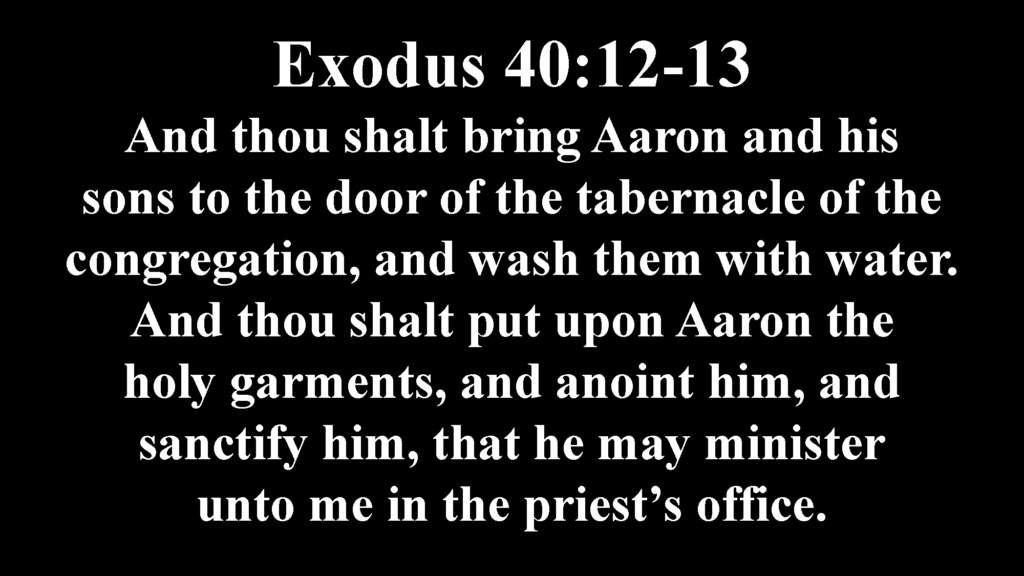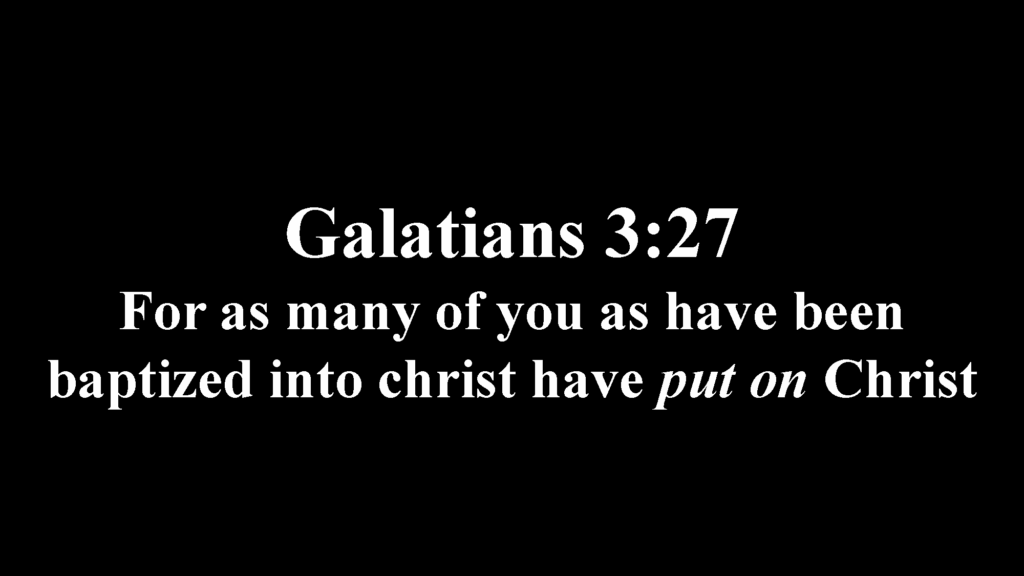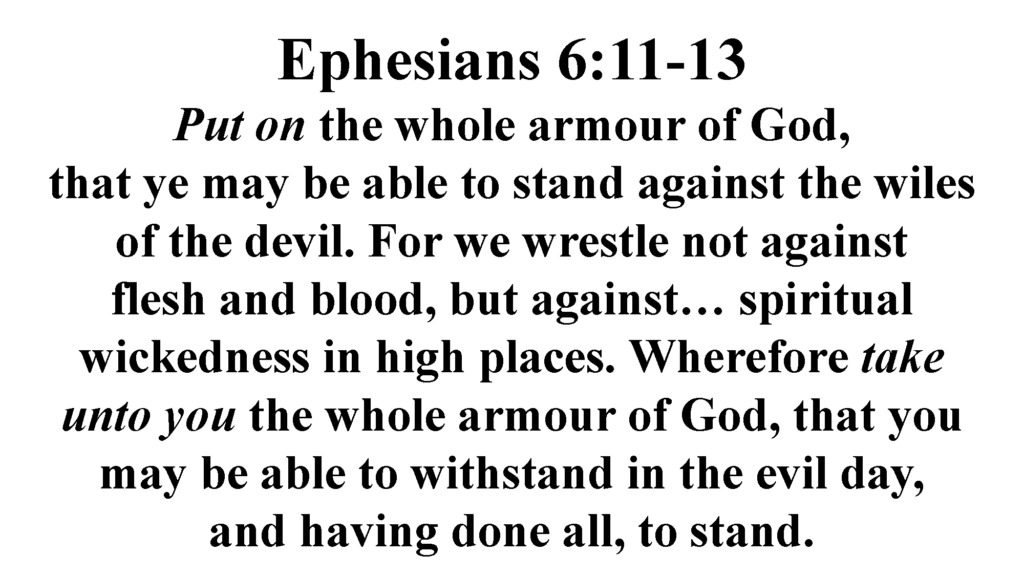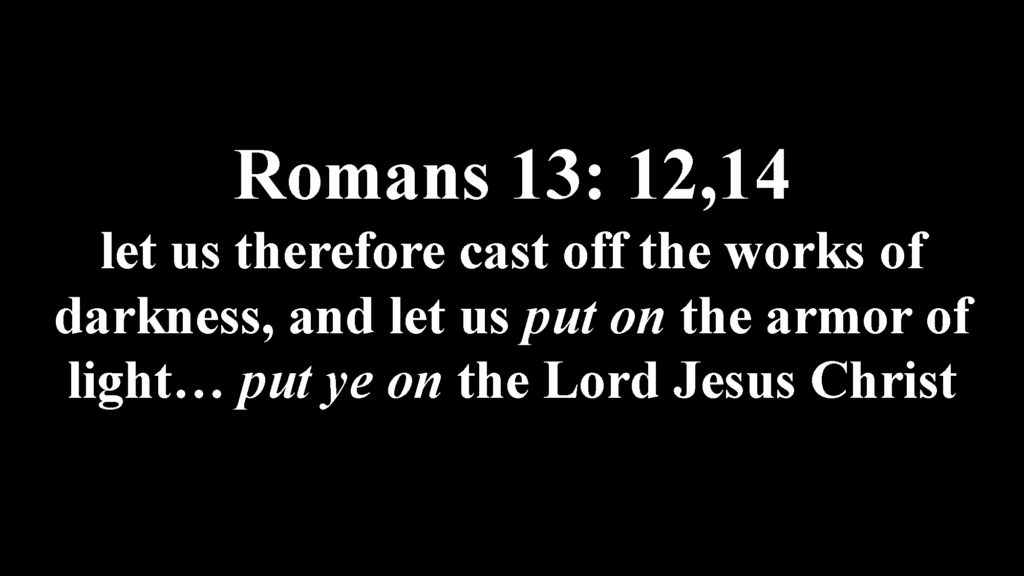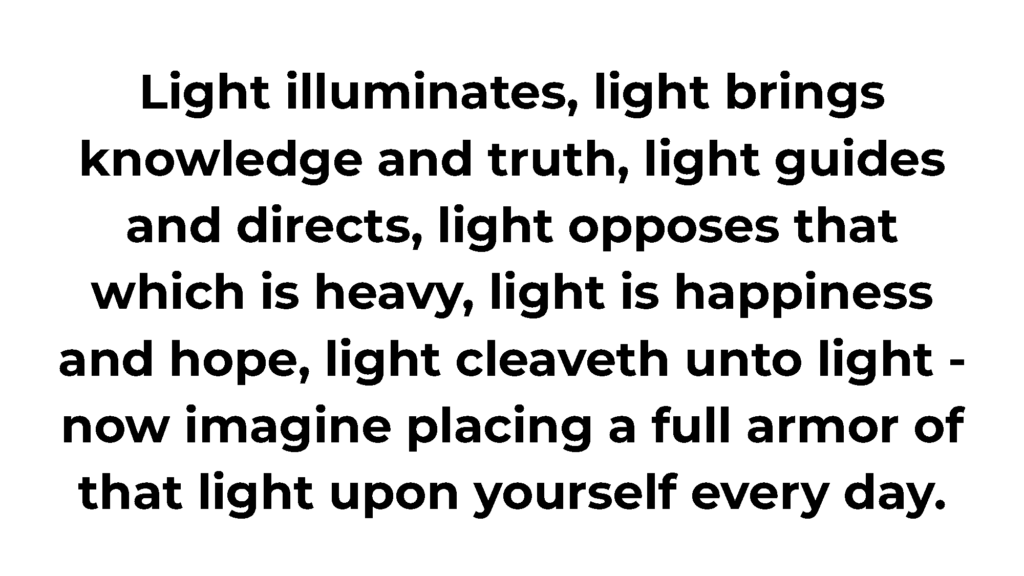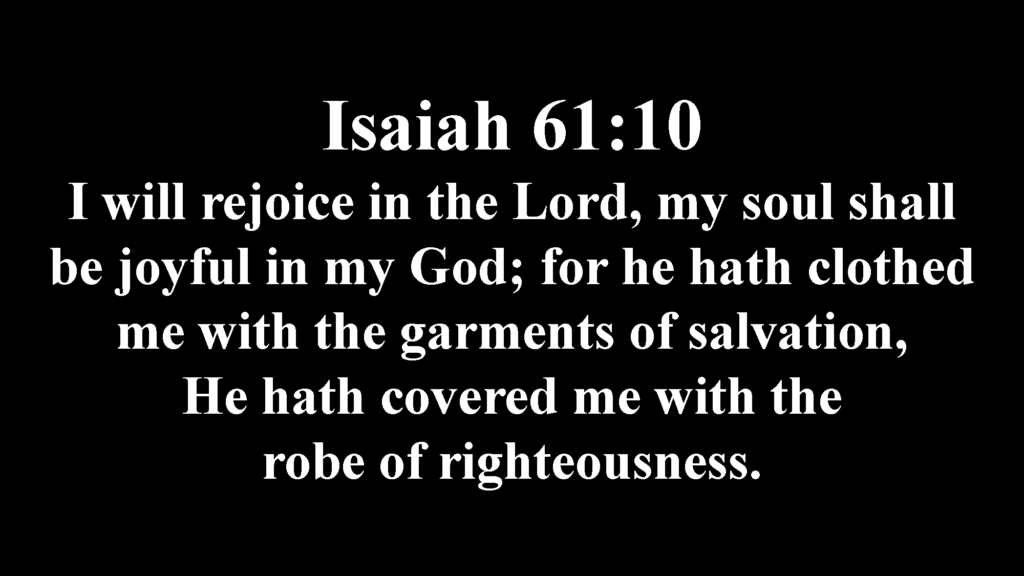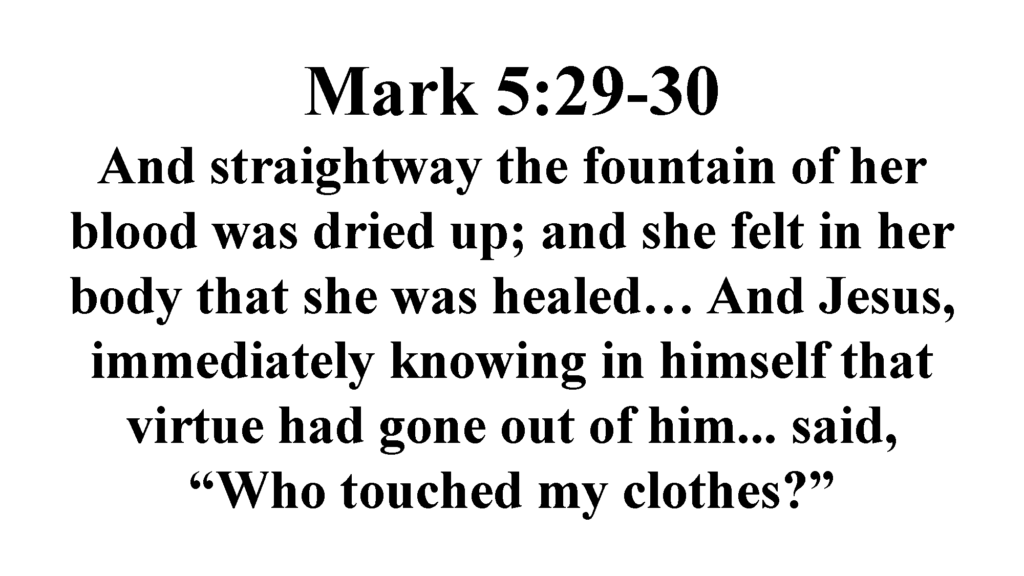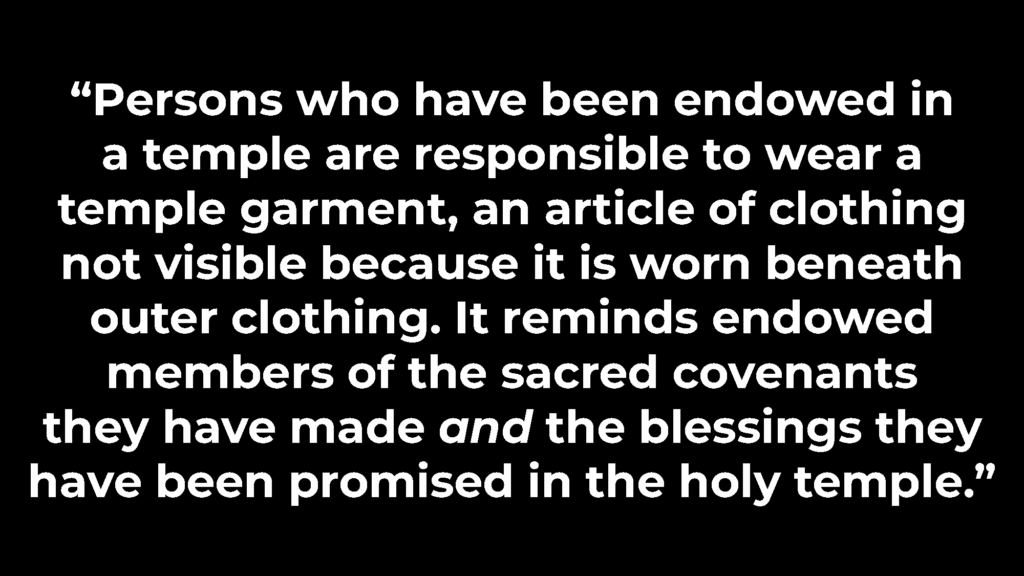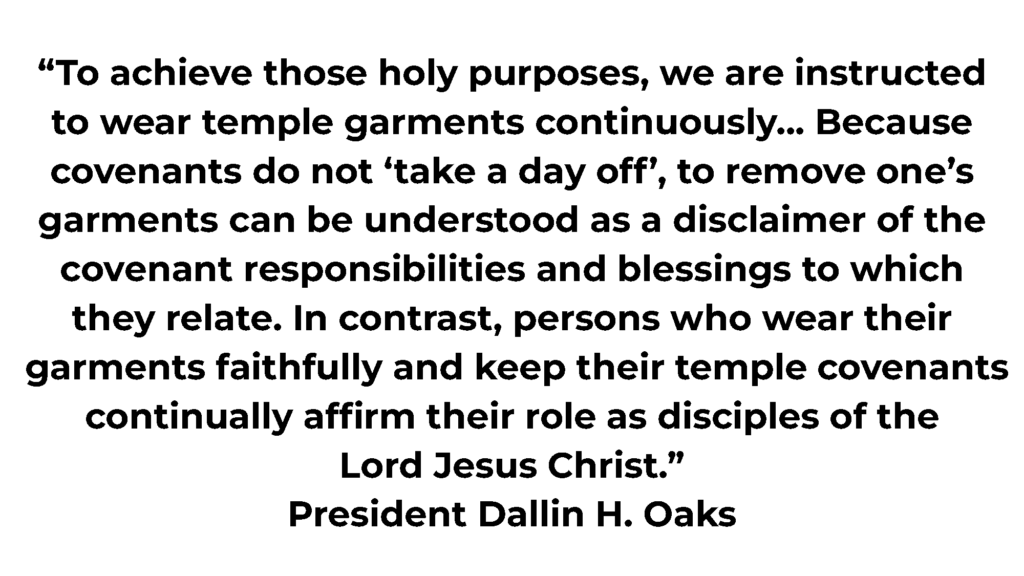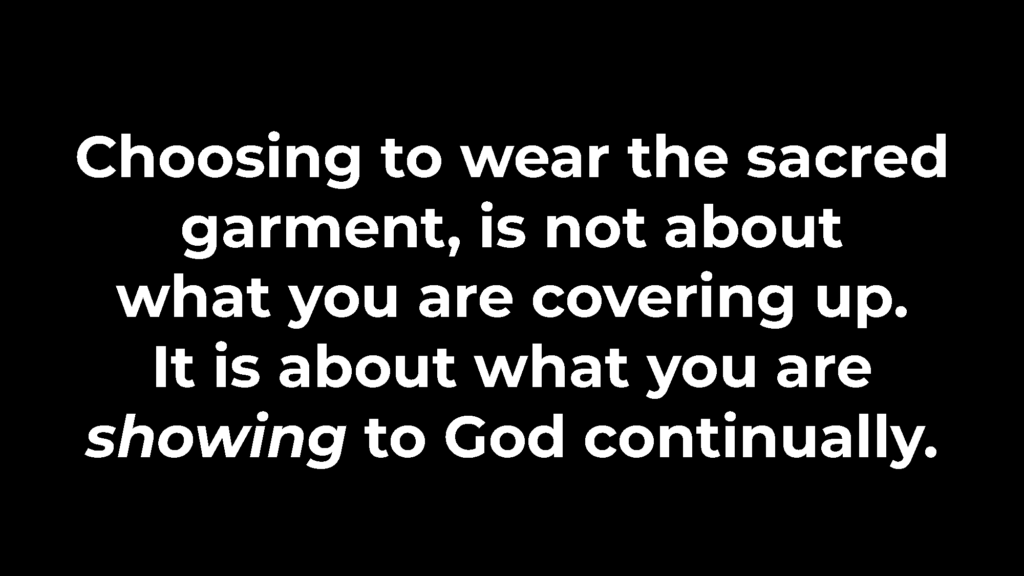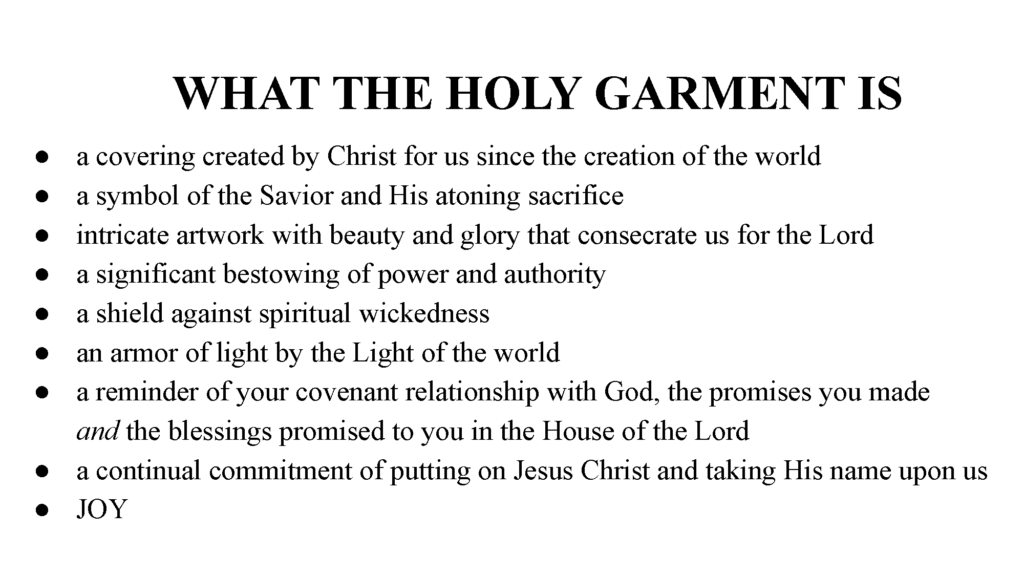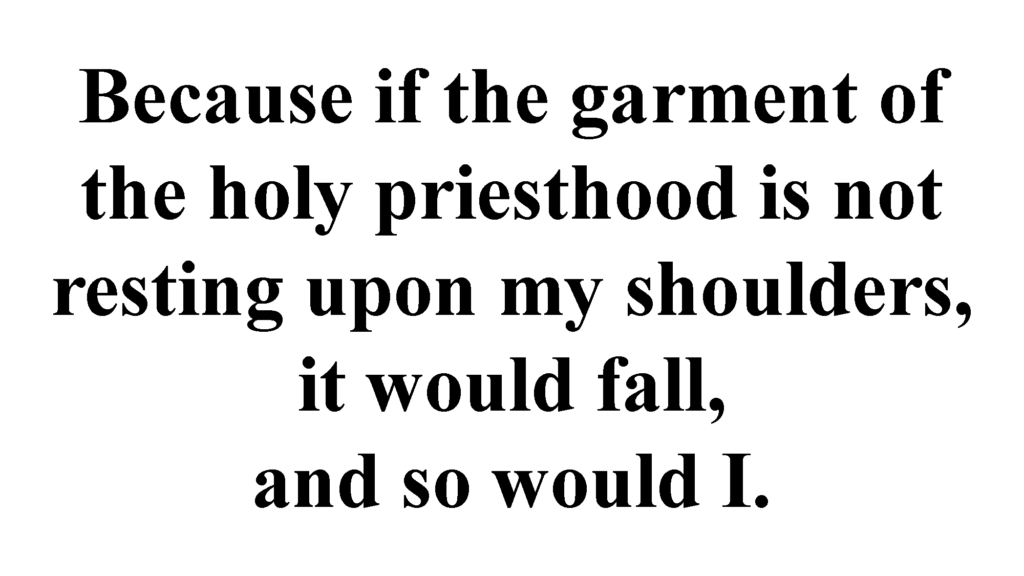Summary
In this 2024 FAIR Conference talk, convert and entrepreneur Hayley Clark offers a heartfelt defense of the Latter-day Saint temple garment. Drawing on scripture, personal experience, and doctrinal insights, she explains why the garment matters in a modern world filled with misinformation and cultural confusion.
This talk was given at the 2024 FAIR Annual Conference at the American Heritage School, Salt Lake City, Utah on August 9, 2024.

Hayley Clark is a mother, wife, entrepreneur, and devoted disciple of Christ. Joining the Church later in life and being exposed to Latter-day Saint culture outside of Utah has given Hayley a unique perspective and testimony of Jesus Christ and His Church.
Transcript
Haley Clark:
A Personal Question
“But why do you have to cover up your shoulders?”
The year is 2008. I’m 17, having lunch with friends. And this question comes up. It’s sincere—but also a little awkward—as my friend just stares at me.
The question comes again:
“Why do you have to wear clothes that cover up your shoulders?”
Asked not to me—but by me.
Conversion and the Long Search for an Answer
See, I am a convert to The Church of Jesus Christ of Latter-day Saints. I was baptized a little less than a year after asking this question, and I wasn’t baptized because I found the answer that day. In fact, I didn’t really understand the answer until a few months ago—about 15 years later.
The answer—oh, sorry—didn’t come from a Primary lesson or from reading the updated For the Strength of Youth guidebook. It didn’t come from a comment made in Sunday School, from an influencer online, or even something I magically found on Google.
The answer came from seeking on my own, out of the best—and some of the oldest—books:
- The Book of Exodus
- The Book of Alma
- The writings of Ephesians and Isaiah
- Recent General Conference talks
- Ancient and modern-day scripture
- Prophets of old and seers on the earth today
It came from studying the temple, the house of the Lord, the covenants we make with our Heavenly Father—and the why of the garment of the Holy Priesthood.
Discovering Sacred Symbolism
Because I’m a convert, I knew absolutely nothing about the garment of the Holy Priesthood. I didn’t know why some members wore their “angel jammies,” as I had heard them called a few times, and I really didn’t even know where to start looking to learn about:
- The context of wearing the garment
- Its ancient purpose
- Its symbolism
- Its history
- The sacred reasons members continue to wear it in modern times
I feel like my story is pretty similar to that of many other members—those searching honestly for understanding about why we wear the garment of the Holy Priesthood.
With one exception: when I covenanted to wear the temple garment, social media and the internet weren’t yet flooded with thousands of photos, videos, and websites spreading false information about the garment like they are today.
Google Isn’t God
Despite what the world wants you to believe, answers to the most important questions don’t come in a click. I know Parker talked about this a little bit ago.
“Google isn’t God. It’s quite the opposite.
Google says, ‘Type,’ and I’ll find you a million different answers, and you get to choose and pick whatever one confirms exactly what you want to hear.”
“God says, ‘Please, ask your questions.’
Then be prepared to seek, knock, study, ponder, pray, listen, have faith, act, obey, and endure.”
This is how you build your tool belt against the fiery darts of the adversary. This is how you build your personal testimony of the gospel of Jesus Christ—and how we’re moving forward today in building increased knowledge of the garment of the Holy Priesthood.
Setting the Stage for the Sacred
It’s my prayer that the Holy Ghost will be with me—and with those of you listening—as we discuss what the garment of the Holy Priesthood is versus what it isn’t. So we can have resources to combat the false information and flattery currently deceiving members and nonmembers of The Church of Jesus Christ of Latter-day Saints.
Consider the sacredness of the garment of the Holy Priesthood in its entirety—including its history—so the why of the garment will have more clarity and significance in our modern times, and grow our testimonies of these ancient symbolic vestments.
So we can proudly stand up for truth when it’s necessary.
An Analogy: The Ancient Car
First, an analogy.
This was the very first gasoline-powered car, patented in 1885—so, it’s ancient. Cars have come a long way since then. And although I’m someone who could care less about what a car drives like or smells like—as long as it doesn’t break down on me on the freeway—I’ve come to learn through experience, research, and time that cars are important. They are more incredible as you learn more about them.
So imagine with me: you’re gifted a car, perhaps by your father. And it’s not just any car—it’s this car. This beautiful thing.
At first glance, it’s old. Strange. Nothing special. Not at all what you’re used to.
Your parents tell you, you’ll love this ancient car, and that it offers all these blessings—including protection. At which you look at it and say:
“What? This? Protection?”
Then your father takes you to the car dealership to learn more. And everyone’s talking in a different language, and you really don’t understand what’s going on at all.
You love your dad. But you’re just not sure about this car—the significance of it, why it’s so important to him, the work it will take to figure out all these new instructions. You’re really worried it’s going to cramp your style, because it’s just not flashy like all the new cars out there that everyone else is driving. You’re turned off from it almost instantly.
- You don’t take the time to look deeper.
- You don’t go back to the dealership ever.
- You don’t even ask your dad in private why he wanted you to have this special car.
You are ashamed. You leave it sitting in the garage and begin driving another car that you chose.
Your father isn’t mad. Perhaps he’s quite disappointed. He still loves you.
He just knows what blessings you’re missing out on.
A Sacred Gift Misunderstood
One day, another car expert stops by and sees you’re not driving around this incredible ancient specimen. He tells you all about it—how special it is.
“Holy,” he calls it. He says to you:
“It looks like just a piece of machinery. But there’s so much more.”
He goes over the history—how long it took to design and build, the inspiration received, the hands that prepared it over hundreds of years, the power inside, the protection it gives you.
Although you may not see that without spiritual vision and knowledge, he explains:
- the way it lifts your burdens
- how it helps you find peace
- how it acts as a reminder of who you belong to
- how the seat you sit on is higher and holier
- how only certain people accept this gift
- and how it ultimately symbolizes the driver of your life
You’re impressed. You’re shocked.
“I have all of this… in this ancient thing? But can’t it just look a little better—like the rest of them?”
To which the car expert replies:
“No. Because it’s sacred. It’s not supposed to look like the rest of the world.
And even more—it’s not about how it looks.
It’s about what you choose to do with it.”
From Cars to Covenants
What was done anciently will seem very strange to those who are foreign to it and know nothing about it.
Car experts and historians would look at the very first automobile and see something brilliant, while unknowing bystanders wouldn’t even look up from their phones. They’d just ask: “Can I get that with Amazon Prime two-day shipping?”
Likewise, disciples of Christ and serious students of scripture—those immersed in the scriptorium—would look at the garment of the Holy Priesthood and see something powerful.
While those who don’t know simply won’t understand it.
And they are the most vulnerable to either giving up or giving in.
“Those who don’t stand for something will fall for anything.”
Flattery Then and Now
You must do the research to seek your own testimony.
You must know what it is—and the power it holds—to know the why behind it, or risk falling for the flattering words of modern-day Korihors.
Let’s take a look at some of the flattery used in the Book of Alma, and compare it to phrases used today in reference to the ancient practice of faithfully wearing the garment of the Holy Priesthood.
In Alma chapter 13, there are multiple references to high priests, ordination, and the Melchizedek Priesthood—the high priesthood of the Holy Order of God.
Verses 11 and 12 say:
“Therefore they were called after this holy order, and were sanctified,
and their garments were washed white through the blood of the Lamb.
Now they, after being sanctified by the Holy Ghost, having their garments made white, being pure and spotless before God, could not look upon sin save it were with abhorrence.”
Not only is this an incredible reference to the garment of the Holy Priesthood, but it must have been a teaching that was spread around for years.
After a while, angry bystanders decided they didn’t approve. Because just a few chapters later—in Alma 30—we read about Korihor, who said (paraphrased in bullet form):
- “I don’t teach the foolish traditions of your fathers.”
- “I don’t teach these people to bind themselves down under the foolish ordinances and performances laid down by ancient priests.”
- “Those ancient priests did this to usurp power and authority over the people.”
- “You keep them in ignorance so they can’t lift up their heads, but must be brought down according to your words.”
- “You say this people is free—I say they are in bondage.”
- “You lead people away after the foolish traditions of your fathers, and you keep them down to serve your own desires.”
Modern-Day Korihors
Based on phrases and complaints I’ve heard on the internet over the last few years, perhaps you’ve heard some modern iteration of this too.
Today’s Korihor might say things like:
- “I won’t stand by as these old men who are out of touch try to tell me what underwear I can or cannot wear.”
- “Garments are oppressive.”
- “It’s an uncomfortable extra layer of fabric that makes me so overheated.”
- “I should be able to wear whatever I want.”
- “This is stupid.”
- “What’s done in the temple is so culty—it’s leading people away from Jesus Christ.”
- “Telling someone what they can or can’t wear is forceful—and we believe in agency.”
- “They’re just trying to find some sort of power over us by telling us what underwear we have to wear.”
- “These old men say the garment gives greater access to the Savior’s mercy—but I feel Jesus now.”
- “After I stopped wearing my garments, I finally feel free.”
- “God loves you no matter what you wear, so you don’t need to wear restrictive, magical underwear made up by some con artist named Joe Smith.”
- “They’re trying to brainwash us.”
Does any of this sound familiar to you?
I sincerely hope not.
But sadly—it’s rampant in the world.
It’s difficult to know exactly what to say to phrases like this, especially when they come from someone who speaks eloquently or has been deemed an expert of sorts.
The Need for Clarity and Commitment
As a convert, I can tell you: these messages about the gospel of Jesus Christ and the garments of the Holy Priesthood are everywhere. And they’re multiplying at an alarming rate.
While we don’t want to be contentious… we do need to put in the work to know the truths from the scriptures for ourselves—so we can stand up against deceiving messages like these when appropriate.
If we believe these are sacred vestments, then we first need to speak of them as such and call them by their name—not a shortened nickname:
- The garment of the Holy Priesthood
- The holy garment
- The temple garment
When we speak about them with respect and reverence, they will become more sacred to us—and to those around us.
Sacred Purposes in Scripture
Let’s discuss the sacred purposes of the garment of the Holy Priesthood, as testified of in ancient and modern scriptures.
And this is just scraping the surface. So please—let this be just the start of your own personal study of the holy garment.
Beginning with the beginning.
In Genesis 3:21, it simply says: “Unto Adam also and to his wife did the Lord God make coats of skins, and clothed them.”
Sister Annette Dennis recently stated:
“The garment of the holy priesthood is deeply symbolic and also points to the Savior. When Adam and Eve partook of the fruit and had to leave the Garden of Eden, they were given coats of skins as a covering for them. It is likely that an animal was sacrificed to make those coats of skins—symbolic of the Savior’s own sacrifice for us.”
The Hebrew word for atonement, kafar, can mean “to cover.”
Our temple garment reminds us that the Savior—and the blessings of His Atonement—cover us throughout our lives.
- A covering, just as the Savior’s sacrifice covers us—washed white of our sins by His atoning blood
- A daily reminder that it is only by the blood of Jesus Christ that we are able to enter His presence
- A sacred privilege made specifically for us by our Savior
Holy Garments in the Book of Exodus
In Exodus 28:2–3, the Lord says:
“And thou shalt make holy garments for Aaron thy brother, for glory and for beauty. And thou shalt speak unto all that are wise hearted, whom I have filled with the spirit of wisdom, that they may make Aaron’s garments to consecrate him, that he may minister unto me in the priest’s office.”
I love the idea of replacing Aaron’s name with my own—to remind myself that these garments of the Holy Priesthood were made for me. And in wearing them, I am consecrated and designated to minister for the Lord.
The verses that follow describe precious and intricate workmanship:
- The breastplate, shoulder pieces, and robe
- Gold, scarlet, fine twined linen
- Topaz, diamond, sapphire, and more
These sacred garments were:
- So special to the Lord
- Made by those He called “wise-hearted” and “filled with wisdom”
- Designed with symbols to help us remember Him, just like the garment of the Holy Priesthood we wear today
In Exodus 40:12–13, the Lord continues:
“And thou shalt bring Aaron and his sons to the door of the tabernacle of the congregation, and wash them with water. And thou shalt put upon Aaron the holy garments, and anoint him, and sanctify him, that he may minister unto me in the priest’s office.”
These washing, anointing, and clothing ordinances are intertwined and connected—and so is the garment of the Holy Priesthood.
Symbolism of Clothing and Endowment
From RedeemerOfIsrael.org:
“Unlike today, clothing in ancient times was very costly and difficult to make.
The hand-spinning and looming process could take possibly hundreds of hours for a single piece of clothing.
Thus, the giving of clothing—especially ceremonial clothing—represented a significant bestowing of authority and power.”
Again—connecting back to washing and anointing.
A key phrase in these verses is: “put on” or “put upon.” This has deep scriptural and linguistic significance. In Greek, put on is translated as enduo, which can also mean “to be saturated into.”
Interestingly, enduo sounds similar to “endow,” which we speak about in the temple—when we are endowed with power and blessings as we covenant to wear the garment and obey God’s commandments.
Entering the Presence of the Lord
Today, receiving your endowment in the house of the Lord begins when you are symbolically clothed, washed, and anointed.
- This is your initiation.
- Your preparation for symbolically entering into the presence of the Lord.
As Galatians 3:27 teaches:
“For as many of you as have been baptized into Christ have put on Christ.”
An action.
A choice.
A promise—to place an emblem upon yourself that represents Jesus Christ and to remember Him throughout your life.
Garments as Armor and Light
We also see this language in scriptures that refer to the holy garment not as ornate clothing—but as a form of armor:
“Put on the whole armor of God, that ye may be able to stand against the wiles of the devil. For we wrestle not against flesh and blood, but against spiritual wickedness in high places. Wherefore take unto you the whole armor of God, that ye may be able to withstand in the evil day, and having done all, to stand.”
—Ephesians 6:11–13
The temple garment is a shield and a protection against the adversary when worn properly. As we are saturated into them with complete faith, leaning wholly upon Jesus Christ, they become a source of spiritual strength.
Another example:
“Let us therefore cast off the works of darkness, and let us put on the armor of light. Put ye on the Lord Jesus Christ.”
—Romans 13:12, 14
What a beautiful sentiment.
The Light of Christ as Covering
President Dallin H. Oaks once said:
“Jesus Christ is the Light of the World… His light is ‘the true light that lighteth every man that cometh into the world’… His example and His teachings illuminate the path we should walk.”
- Light illuminates
- Light brings knowledge and truth
- Light guides and directs
- Light opposes that which is heavy
- Light is happiness and hope
- Light cleaveth unto light
Now imagine placing a full armor of that light upon you—as the first thing you choose to do every day.
I’d venture to say that having this armor on us in modern times is even more important now than it was for those who lived in ancient days.
Isaiah’s Joyful Clothing
In contrast to the negative messages of the world, Isaiah declares:
“I will greatly rejoice in the Lord,
my soul shall be joyful in my God;
for he hath clothed me with the garments of salvation,
he hath covered me with the robe of righteousness.”
—Isaiah 61:10
Can you feel the joy and happiness exuding from this verse?
Why?
Because Isaiah understands:
It isn’t about the fabric.
It isn’t about how it all looks—or how hot it might be in the summer.
It’s about the Lord.
It is a gift that covers him, and what’s more important is what he chooses to do with the holy garment. He has chosen to make sacrifices and to glorify God.
Christ as the Clothing
Incredibly, Christ isn’t only described as the one clothing us—but as the clothing itself.
In Matthew 9, we read about the woman suffering with the issue of blood for twelve years. With unwavering faith, she stretches and reaches for the hem of Christ’s robe, hoping for healing.
“And when she touched his hem, the fountain of her blood was dried up;
and she felt in her body that she was healed.
And Jesus, immediately knowing in himself that virtue had gone out of him, said,
‘Who touched my clothes?’”
—Matthew 9:20–21, Mark 5:30
Through Christ, this woman was healed and restored.
It is Jesus Christ—the Redeemer—who helps us, empowers us, strengthens us, and heals us.
And as we choose to put upon Jesus Christ, we express our continual commitment to take His name upon us.
Sacred, Not Superstitious
To clarify—it’s not the fabric of the holy garment itself that is magical in any way.
Speaking of uniforms worn by other personnel, President Dallin H. Oaks once stated:
“There is no magic in their distinctive clothing or symbols—only a needed reminder of the special responsibilities the wearers have assumed.”
This absolutely applies to covenant-keeping, endowed members of The Church of Jesus Christ of Latter-day Saints.
A Sacred Responsibility
And speaking of responsibility, President Dallin H. Oaks goes on to say:
“Persons who have been endowed in a temple are responsible to wear a temple garment—an article of clothing not visible because it is worn beneath outer clothing. It reminds endowed members of the sacred covenants they have made
and the blessings that they have been promised in the Holy Temple.”
Pause there for a moment and let that sink in.
The garment of the Holy Priesthood is a reminder of sacred covenants and blessings from within the House of the Lord—worn under your outer clothing, as close to your skin as possible.
Not to show the world what you believe—
but to show God that He continues to achieve His holy purposes in you.
Covenants Don’t Take a Day Off
We are instructed to wear temple garments continuously—because covenants do not take a day off.
To remove one’s garments can be understood as a disclaimer of the covenant responsibilities and blessings to which they relate.
In contrast, persons who wear their garments faithfully and keep their temple covenants continually affirm their role as disciples of the Lord Jesus Christ.
Choosing to wear the sacred temple garment—although deemed a covering—
is not about what you are covering up.
Faithfully wearing the garment of the Holy Priesthood is about what you are showing to God—continually.
The temple garment and the covenants made inside the temple are intricately and intentionally intertwined. It is all divine design.
What the Garment Is—and Isn’t
To clarify:
The garment of the Holy Priesthood is not:
- magical underwear
- restricted pieces of fabric
- something made up by the Prophet Joseph Smith
- something without any real spiritual significance or ancient purpose
- something we no longer need today
According to ancient and modern-day scripture, the garment of the Holy Priesthood actually is:
- A covering created by Christ for us since the creation of the world
- A symbol of the Savior and His atoning sacrifice
- Intricate artwork—beauty and glory that consecrate us to minister for the Lord
- A significant bestowing of power and authority
- A shield against spiritual wickedness
- An armor of light, by the Light of the World
- A reminder of your covenant relationship with God
- A sign of promises made—and blessings promised to you in the House of the Lord
- A continual commitment of putting on Jesus Christ
- And joy
As Close as Christ Can Be
The garment of the Holy Priesthood is worn beneath your clothes, against your skin—
as close to you as physically Christ can be.
And your skin—being the largest organ—does what?
It absorbs.
Your skin, while wearing the garment, will absorb heavenly things:
light, power, authority—even Jesus Christ.
We put on the garment.
We put the garment on ourselves first—
Not because they are a restriction—
but because they are a beautiful reminder of the glory of Jesus Christ
and how His atoning sacrifice covers us completely.
They act as a barrier to the outside world—
a shield of protection and armor against the tactics of the adversary.
So Why Do I Cover My Shoulders?
So why do I wear clothes that cover my shoulders?
It’s not because my shoulders are something to be kept secret or hidden.
It’s about what rests on them continually.
When I choose to put upon them—what I choose to be saturated into:
- the sacred vestments
- the breastplate of the high priest
- the covering of Christ’s Atonement
- the armor of God
- my Savior, Jesus Christ Himself—
- the garment of the Holy Priesthood
Audience Q&A
No Q&A was offered in this discussion.
Endnotes & Summary
Why do Latter-day Saints wear the temple garment? In this 2024 FAIR Conference talk, convert and entrepreneur Hayley Clark offers a personal and doctrinal perspective on the sacred purpose of the garment of the Holy Priesthood. Sharing her own experience of seeking answers, Hayley counters common criticisms and cultural misunderstandings by turning to scripture, ancient tradition, and prophetic counsel. She testifies that the garment is not restrictive or outdated, but a sacred gift from Christ—a symbol of covenant, protection, and spiritual power that connects modern disciples to ancient faith and divine promises.
All Talks by This Speaker
coming soon…
Talk Details
- Date Presented: August 9, 2024
- Duration: 22:51 minutes
- Event/Conference: 2024 FAIR Annual Conference
- Topics Covered: temple garment, Latter-day Saint temple, sacred clothing, modesty, Hayley Clark FAIR, convert testimony, LDS temple covenants, priesthood garment, symbolism in scripture, modern discipleship, Mormon underwear
Common Concerns Addressed
Why Latter-day Saints wear temple garments
This talk explains that temple garments are not merely clothing choices but sacred reminders of covenants made with God—symbols of discipleship, spiritual protection, and the covering power of Jesus Christ’s Atonement.Are garments “magical underwear”?
Hayley Clark directly refutes this common mockery by clarifying that garments hold no magical power; rather, they serve as spiritual emblems of sacred promises and divine identity, grounded in ancient scriptural traditions.Misunderstandings about modesty and agency
The presentation addresses the misconception that wearing garments is about controlling modesty or limiting agency, emphasizing instead that the choice to wear them is a voluntary, faith-driven act of devotion and covenant-keeping.Claims that temple practices are cult-like
Clark challenges accusations that temple worship is secretive or manipulative, highlighting its scriptural roots, the sacred (not secret) nature of ordinances, and the invitation for each person to seek understanding through personal revelation.Flattering critiques from modern-day “Korihors”
Drawing parallels to the Book of Alma, the talk identifies how persuasive voices today—like Korihor of old—use flattery and skepticism to undermine faith, particularly targeting sacred practices like the garment, and offers tools for spiritual discernment.Cultural vs. doctrinal reasons for sacred clothing
The speaker distinguishes between cultural expectations and doctrinal truth, showing that the wearing of the garment is not cultural conformity but a covenantal practice with biblical precedent and eternal significance.Symbolism of scriptural garments and coverings
This talk explores how garments symbolize spiritual covering, consecration, and readiness to serve God—tracing these meanings from Genesis, Exodus, and the writings of Paul, demonstrating their consistent role throughout divine history.Personal agency and covenant responsibility
Rather than negating agency, the talk teaches that the decision to wear the garment is an empowered expression of agency—a conscious choice to remember Christ, honor covenants, and embrace the responsibilities of discipleship.
Apologetic Focus
1. Misunderstanding or mockery of the temple garment (e.g., “magical underwear” trope)
Concern: Critics often reduce the temple garment to a punchline, calling it “magical underwear” and mocking it as irrational or superstitious.
Clarification: Hayley affirms that the garment is not magical but deeply symbolic—representing covenants, spiritual protection, and the covering power of Christ’s Atonement. She uses scripture and modern prophetic counsel to elevate the garment’s purpose and meaning.
2. Cultural vs. doctrinal expectations around modesty
Concern: Some confuse Utah-based Church culture with doctrine, believing modesty standards (like covering shoulders) are arbitrary or outdated.
Clarification: Hayley distinguishes between cultural norms and eternal principles, showing how modesty and sacred clothing are rooted in scriptural patterns and personal covenants rather than societal pressure.
3. Accusations that temple practices are cult-like or manipulative
Concern: Detractors claim that temple rituals and garments are secretive, controlling, or manipulative—fueling fear or discomfort.
Clarification: The talk reframes temple practices as sacred rather than secret, highlighting their ancient scriptural origins and divine intent to draw us closer to Christ through personal, voluntary commitment.
4. Struggles with faith in a digital age full of conflicting opinions
Concern: In a world of online influencers and information overload, many find it difficult to discern truth and build faith amid conflicting messages.
Clarification: Hayley contrasts the quick, shallow answers of the internet with God’s invitation to seek, knock, study, and pray. She emphasizes the importance of personal revelation and thoughtful study to counter digital distortion.
5. Criticisms of Church leaders’ authority and teachings on sacred practices
Concern: Some argue that Church leaders are out of touch, using their position to control members’ personal choices, including what they wear.
Clarification: Hayley counters this by testifying of prophetic authority and the revelatory nature of temple instruction. She affirms that the garment is not a demand from men, but a sacred gift from God, taught through inspired leadership.
6. Discomfort or disillusionment around obedience and agency
Concern: Critics sometimes frame obedience to commandments—especially those involving dress or temple worship—as a violation of agency.
Clarification: Hayley reframes obedience as an expression of agency rather than a loss of it. She explains that wearing the garment is a voluntary, joyful act of discipleship and covenant-keeping, not coercion.
Explore Further
- Question: Is the temple garment simply “magic underwear”?
- Question: Do Latter-day Saints believe that the temple garment will protect them from physical harm?
- Question: Is the wearing of the temple garment not supported by the Bible?
- Question: Are sacred garments used in other religious traditions?
- Question: What is the significance of the temple garment worn by members of The Church of Jesus Christ of Latter-day Saints and what is the appropriate way to wear them?
- “Latter-day Saints 101: What Church Members Believe”
- “The Temple Garment: “An Outward Expression of an Inward Commitment””
Covenants and Responsibilities By President Dallin H. Oaks
Put Ye On the Lord Jesus Christ By Sister J. Anette Dennis
Share this article



